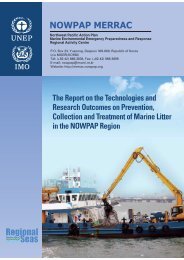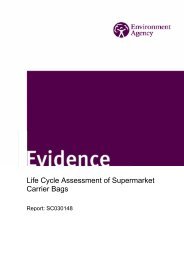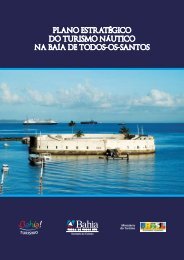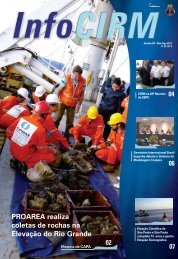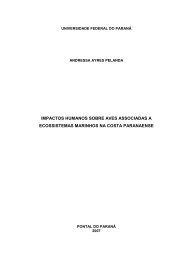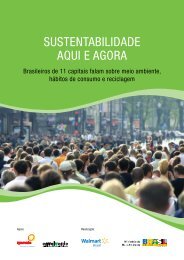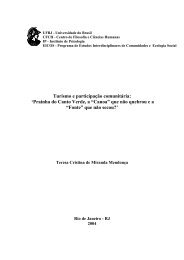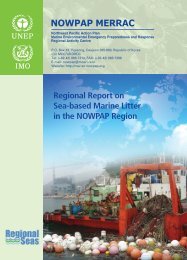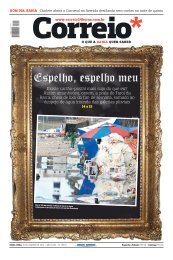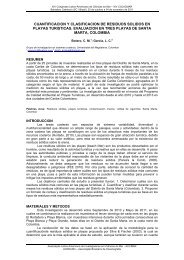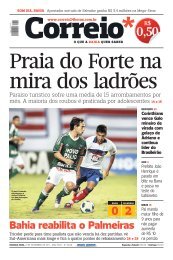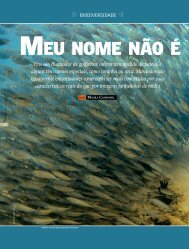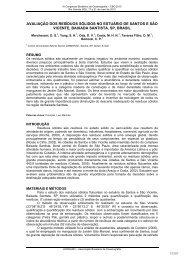view pdf - Seas At Risk
view pdf - Seas At Risk
view pdf - Seas At Risk
- No tags were found...
You also want an ePaper? Increase the reach of your titles
YUMPU automatically turns print PDFs into web optimized ePapers that Google loves.
2.1.2.6 SummaryAmounts of marine litter at sea have also remained consistent, but show varied spatial distributionwith litter on the seabed varying significantly from 0 to 101 000 pieces of litter per km 2 , due totopological and tidal differences. The Greater North Sea background study into the EcoQO onplastic particles in fulmars stomachs showed that there was a reduction in the amount of litter atsea during the late 90’s, with the average amount of plastic per bird falling from 0.5g to 0.3g,however, this has now levelled off and there has been no reduction in recent years. In the Bay ofBiscay strong seasonal variation was noted with 7 times more litter found on the seabed in wintercompared to summer.In the monitoring of seabed marine litter in the various Fishing for Litter projects the proportion ofplastic varied from 55% in the Celtic <strong>Seas</strong> to 38% in the Greater North Sea. However other itemssuch as metal (23-13%), rubber (25-9%) and wood (10-11%) made up a greater proportion of thetotal number of items compared to marine litter monitored on beaches. This is as expected asmany types of plastic float and therefore are concentrated on the surface of the sea and at thecoastline whereas heavier items sink to the seabed.2.2 Types of Marine Litter in the North-East <strong>At</strong>lantic2.2.1 Types at CoastlineMarine litter can be any persistent solid material discarded, disposed of or abandoned in themarine, coastal or riverine environment. It can be accidentally lost material (fishing gear, cargo),deliberately left by people on beaches and shores or thrown overboard from ships. Globallyreported marine litter consists of many items, for example: plastics, fishing gear, polystyrene(coffee cups, takeaway food containers, packing material), rubber, glass, wood, metals, sanitaryand sewage-related litter, clothing, paper and cardboard. 15 Of all marine litter items found in all100-metre surveys on the regular reference beaches in the OSPAR Maritime Area, an average of75 per cent was made of non-degradable plastic and/or polystyrene, (see Figure 2.20). Plastic andpolystyrene was the most common type of marine litter found also in the 1-km surveys on thereference beaches, accounting on average for almost 66 per cent of the total 16 . Figure 2.21illustrates the proportion of items in different categories monitored each year in the OSPAR PilotProject: again plastic and polystyrene are the most common items but also the proportion of itemsthat are plastic has increased from 68% in 2001 to 78% in 2006.15 OSPAR Commission, 2004. Environmental Assessment and Monitoring Committee (ASMO)16 OSPAR Commission, 2007. OSPAR Pilot Project on Monitoring Marine Beach Litter: Final Projectreport.21



